Have you paid attention to the architectural wonders of the cities of Uzbekistan? Agree, from the beauty and harmony of complex lines, bright colors of mosaics and mysterious stalactites, it takes your breath away! "Every nation is an artist," and Uzbek architects are unsurpassed masters in this matter.
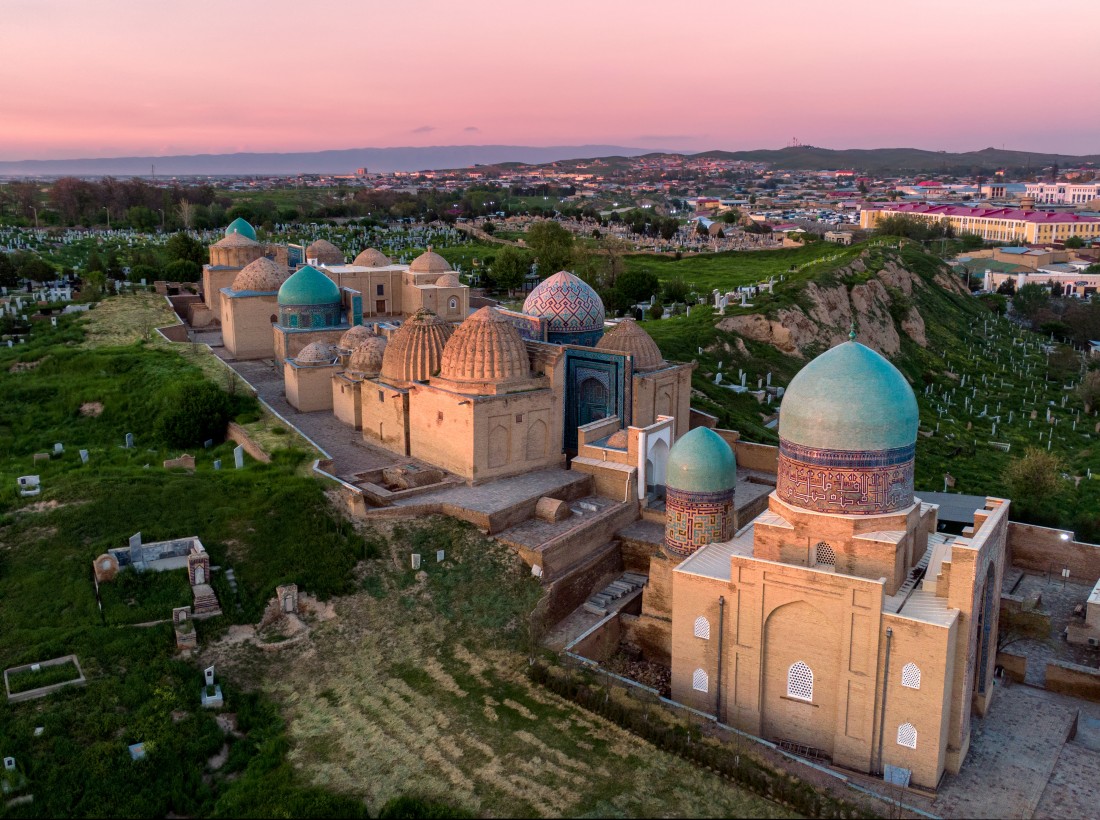
There are a huge number of historical architectural monuments on the territory of Uzbekistan. Mosques, mausoleums (tombs) and madrasahs (Muslim higher educational schools) occupy a special place. Mosques have always been places of worship, solitude and meetings. Minarets or large towers were usually built next to mosques in order to call residents to prayer. The minarets were built in a round shape, had a spiral staircase inside, and a special platform at the top.
The most famous minaret is the Kalta Minor, or "short minaret", in Khiva. It was built in 1855 and has a height of 26 meters, and the diameter of the tower reaches 14 meters. This minaret is noticeably different from all the others. Initially, the minaret was conceived as a high tower, but the construction was stopped, because during the construction it became clear that from a higher point the call to prayer in the city simply would not be heard.
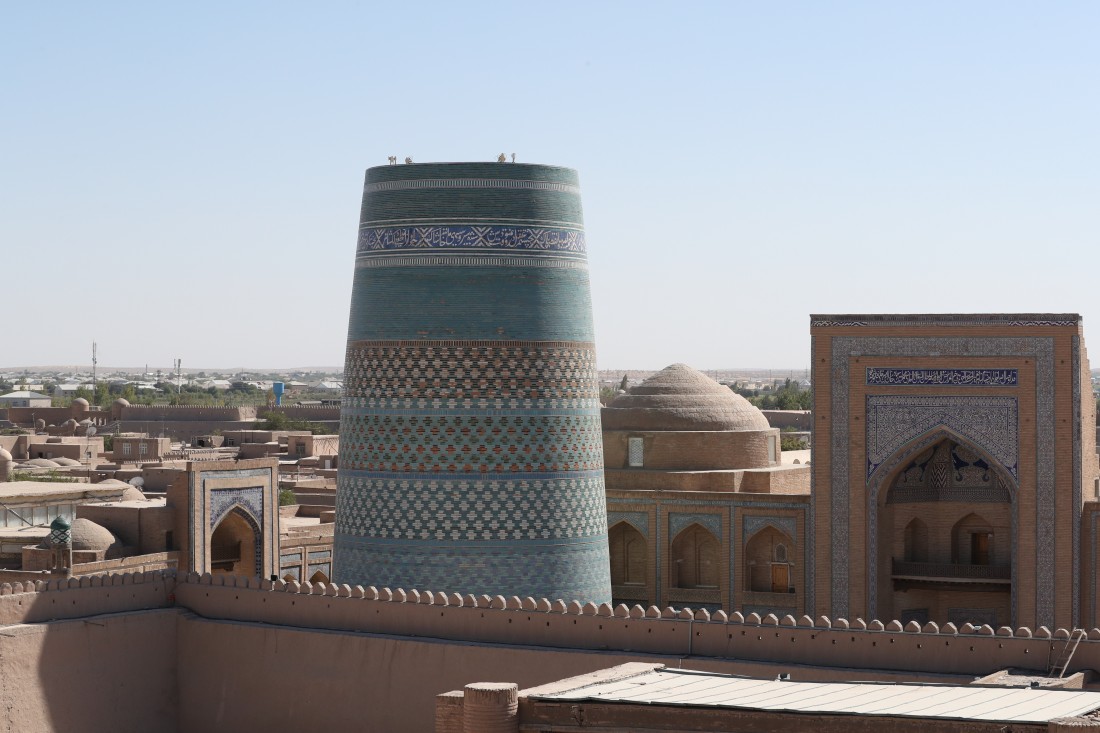
Madrasas were important objects, because bright minds of their time studied there, and advanced people taught them. As a rule, they studied Islamic doctrine, literary languages, calligraphy, law, and some applied disciplines there. During their studies, students and their teachers lived in special rooms–cells - hujras, located on the top floor. There was always a courtyard and a garden. The Central Asian climate dictated its conditions in the construction of buildings. The most important task was to protect yourself from the dry and sultry summer and keep cool, so the exterior of the structures was usually a solid wall, and the windows faced the courtyard. Inside the square courtyard there was necessarily a small pool for collecting water and performing ablutions. Arched entrance portals and special aivans (rows of niches) protected windows and doors from direct sunlight.
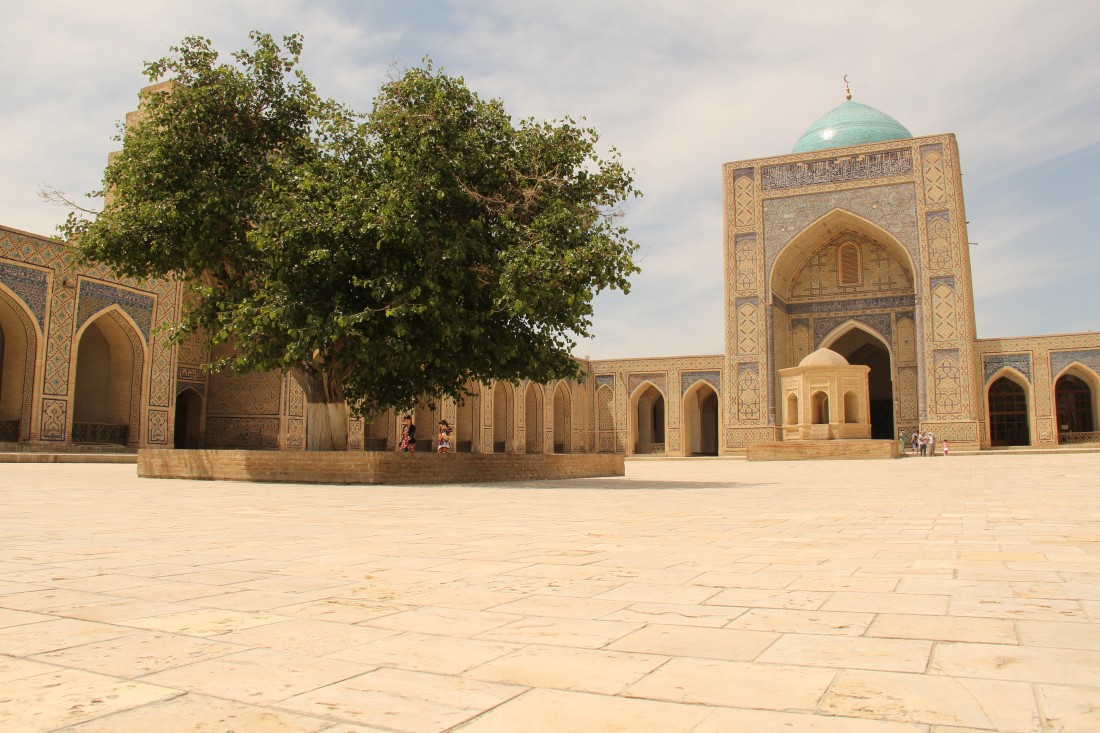
An important element of architecture was a dome on a low drum, usually blue in color with a smooth surface, but sometimes the dome was divided into 63 ribbed sections, symbolizing the years of the Prophet Muhammad's life. The building was also decorated with carved doors, elegant columns, window bars. The more skilful and finer the carvings were, the greater the object of pride was the building.
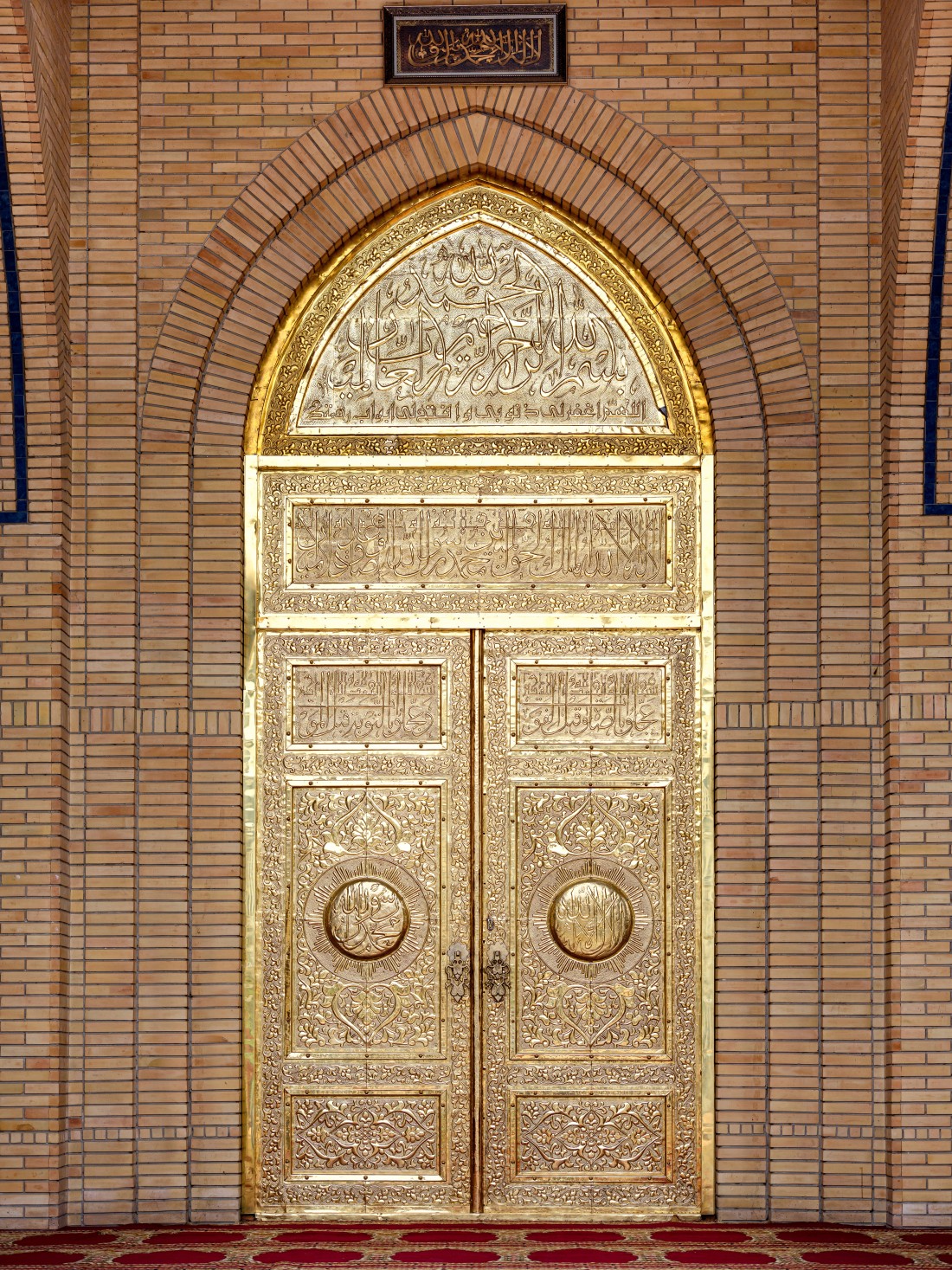
The exterior walls needed to be beautifully decorated and there were no boundaries for the author's imagination. The main task of the artist is to cover the wall like a carpet of patterns and drawings. All possible plant and flower patterns, stylized motifs, knots symbolizing happiness and a long life were also used here. A special place is occupied by the girih pattern, which is peculiar to art only in Central Asia. For its image, precise mathematical calculations are needed to obtain absolute symmetry.
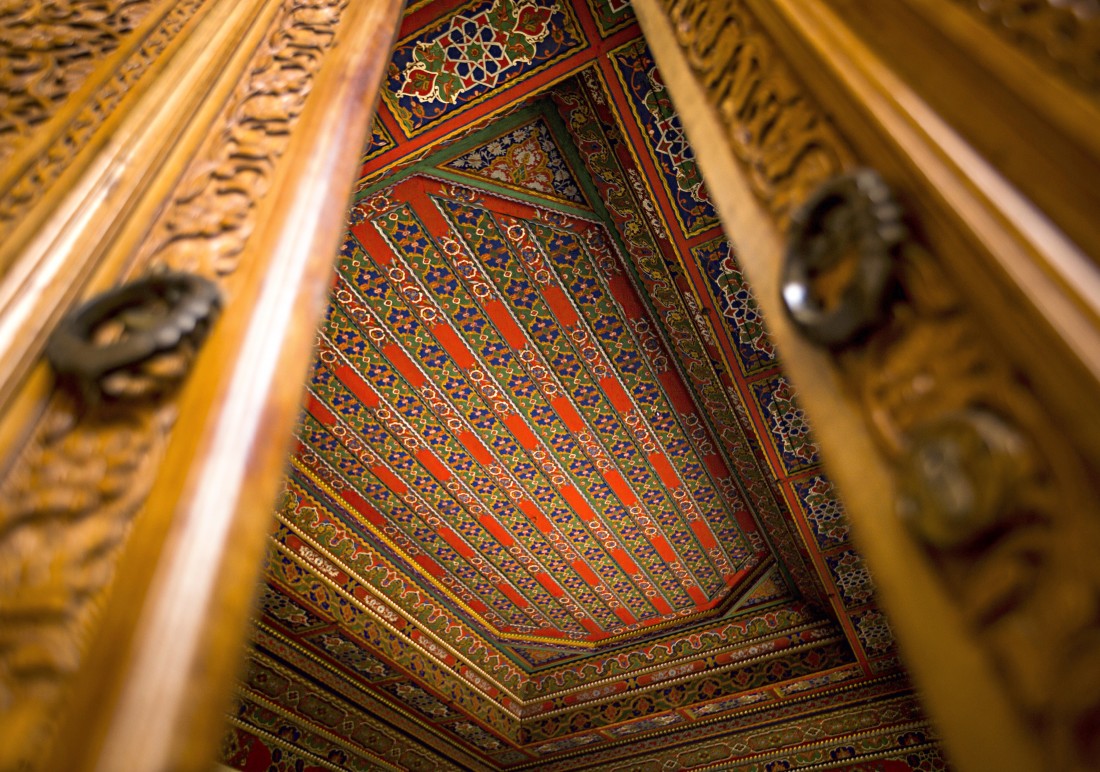 Of great interest is the Sherdor madrasah in Samarkand, built in 1619. The portal of the building is decorated with two tigers carrying the sun on their backs. Another madrasah Nadir-Divan-begi (1623) in Bukhara also stands out with an ornate portal, only instead of the famous tigers, the portal depicts running deer and two mythical birds Simurg.
Of great interest is the Sherdor madrasah in Samarkand, built in 1619. The portal of the building is decorated with two tigers carrying the sun on their backs. Another madrasah Nadir-Divan-begi (1623) in Bukhara also stands out with an ornate portal, only instead of the famous tigers, the portal depicts running deer and two mythical birds Simurg.
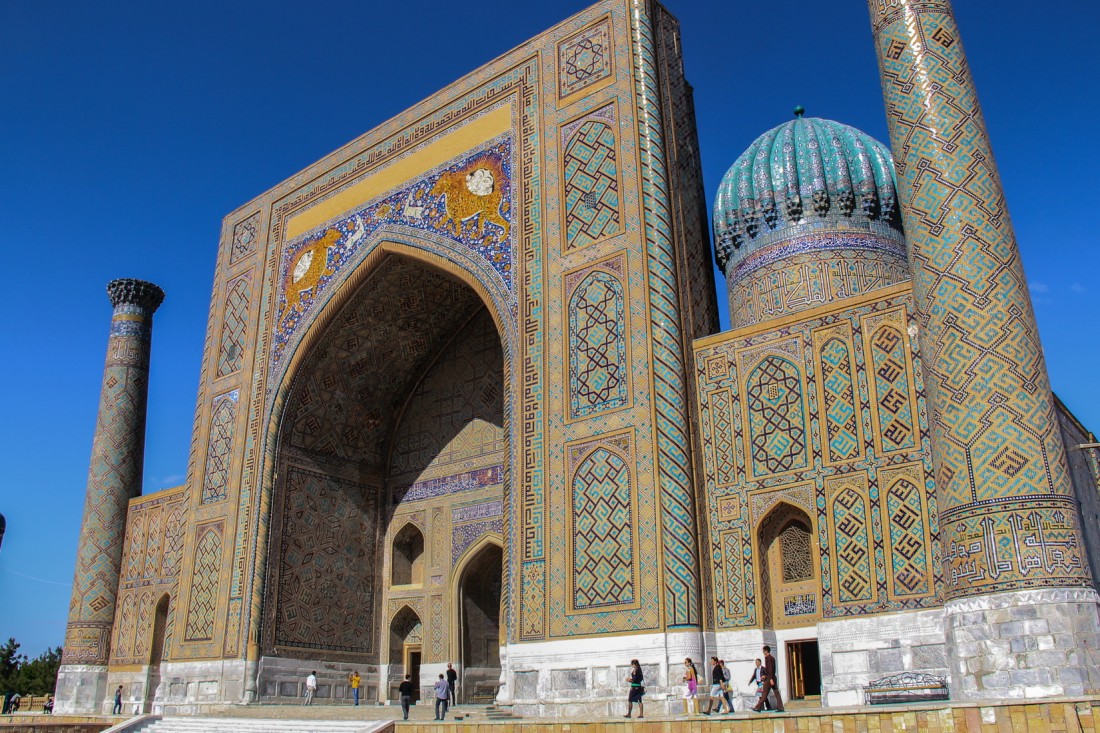
The decor of the facades was covered with multicolored glazed tiles. Each major cultural center had its own distinctive feature in decoration. For example, in Khiva they preferred to use turquoise and blue shades more, with the obligatory presence of a thin black contour. In Shakhrisabz, color preferences were more diverse: from white to green, and even red.
Also important elements of architecture were skillfully woven inscriptions in Arabic script and, of course, luxurious stalactites above the portal entrance. Hanging stalactites form the entrance to a niche - a sacred "cave". Their main color is blue, associated with the sky and cool water.









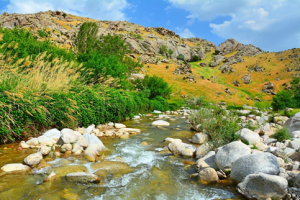
Working hours: 9:00 AM - 6:00 PM, Mon-Fri
For any questions
ПОЛЬЗОВАТЕЛЬСКОЕ СОГЛАШЕНИЕ
1. Определение
Настоящее Пользовательское соглашение (далее — Соглашение) является Публичной офертой в соответствии со статьёй 367 Гражданского кодекса Республики Узбекистан от 21.12.1995 (https://lex.uz/ru/docs/111181#162763) и регулирует порядок использования материалов и Сервисов сайта Государственного унитарного предприятия «Национальный PR-центр» (далее — Предприятие), размещённого на веб-сайте и поддоменах Национального Туристического Информационного Центра: https://uzbekistan.travel/ (далее — Сайт).
Посетитель и (или) Пользователь подтверждает, что ознакомлен, полностью и безоговорочно принимает все условия настоящего Соглашения и обязуется их соблюдать.
Использование Сайта Пользователем означает полное принятие данного Соглашения «как есть» в форме акцепта.
Соглашение вступает в силу с момента посещения любой страницы Сайта и (или) регистрации на Сайте и действует бессрочно во время пользования Сервисами Сайта.
Настоящее Соглашение обязательно для исполнения всеми Посетителями и Пользователями без каких-либо изъятий и дополнительных согласований.
Пользователь обязуется самостоятельно проверять актуальную редакцию Соглашения на Сайте перед использованием Сервисов.
2. Предмет Соглашения
Предметом настоящего Соглашения являются правила использования материалов Сайта и предоставление Посетителю и (или) Пользователю возможности использования Сервисов Сайта.
Предприятие является правообладателем исключительных прав на Сайт в целом и на его составные части, включая все виды контента: логотипы, товарные знаки, тексты, статьи, аннотации, иллюстрации, фотографии, графику, аудио- и видеофайлы, пользовательские интерфейсы, дизайн, структуру, программы, базы данных.
Я прочитал(а) и соглашаюсь с условиями использования сайта и политикой конфиденциальности.
